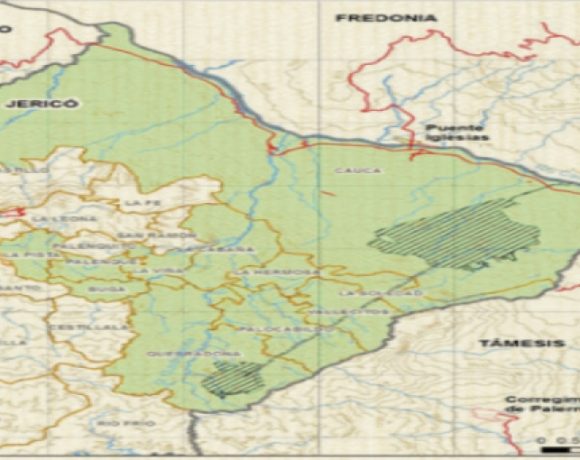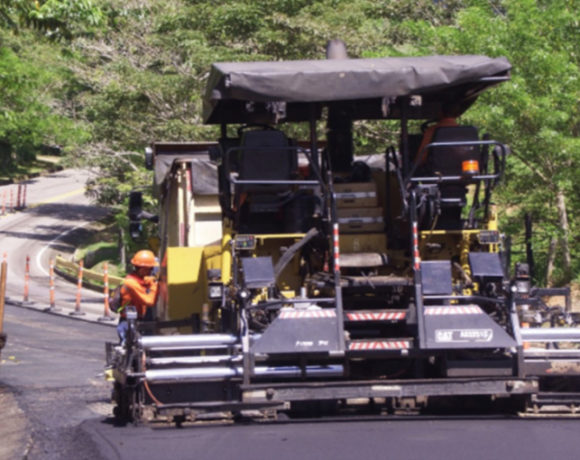Antioquia’s Legal Gold Miners Expanding, Getting Help from Colombian Police

The multi-billion-dollar business of gold mining in Antioquia has suffered enormously from decades of violence, land invasions, murders, extortions, environmental destruction, illegal and “informal” mining, as well as the intromission of guerrilla and “paramilitary” groups.
But some hopeful signs are starting to emerge as Colombia’s National Police announced April 25 their first-ever seizure of 61,884 grams of illegally trafficked gold, worth an estimated COP$5 billion (US$1.7 million).
The criminal investigation unit (DIJIN) of the National Police and Interpol jointly seized the gold — originally mined in Buritica, Antioquia, and then transferred to Medellin’s downtown Olaya Herrera airport, the point of capture, according to police.
The seizure followed DIJIN’s discovery that the company in charge of shipping failed to prove legal origin of the gold.
Subsequent investigation by DIJIN’s money-laundering investigative unit discovered that criminal gangs were behind the production and shipment of the gold. These gangs employ heavy mining equipment and use toxic mercury at unlicensed mining sites in Antioquia, according to police.
The gangsters had planned to sell the gold to buyers in the USA and Switzerland, according to DIJIN.
Seeking to evade detection, these gangs often collaborate with commercial establishments and falsify documentation in order to launder illegal gold as legal gold obtained from small-scale producers in Antioquia, according to DIJIN.
Continental: Crackdown on Criminal Mining
On a related front, Toronto, Canada-based Continental Gold announced April 25 that the Colombian government, the Antioquia departmental government and the municipal government of Buritica just launched a “major joint operation” to shut-down illegal and criminal mining operations within Continental’s licensed mining areas.
“The intervention is a direct result of the national government’s initiative to eliminate illegal mining, through which there have been several similar interventions recently in other parts of the country,” according to Continental.
The crackdown “also reflects the newly-elected state government of Antioquia’s full alignment with the national government’s agenda to support legal, private sector mining as well as the formalization of small-scale local traditional miners.
“These efforts respond as well to the January 20, 2016, Resolution No. VSC-055 issued by the National Mining Association of Colombia (ANM) in which illegal mines at Buriticá were ordered to be permanently closed, due to significant safety concerns generated by unsafe and non-technical practices.
“The company expects that the current operation by the Colombian authorities will pave the way for increased territorial control by the government in the region.
“The increased control, in conjunction with the substantial investment currently being made in the economic and social development of the region and in key environmental conservation initiatives by the company, strategic non-government organizations, the government and the private sector, will further strengthen the process of permitting, constructing and operating a mine at the company’s multi-million-ounce, high-grade Buriticá project.”
On a related front, the Mayor of Buritica — Humberto Antonio Castaño — announced April 25 that Colombian Police so far have shut-down 13 illegal mines operating in the area.
According to a report from Medellin-based daily newspaper El Colombiano, those mines were among some 21 operations ordered shut by the National Mining Agency, although more than 20 other illegal mines in the area have yet to be shuttered.
Some 2,000 illegal miners – many of them “drifters” that roam around Colombia invading areas previously licensed to legal, tax-paying gold-mining companies – are affected by the shut-downs in Buritica, according to the report.
However, many of these illegal miners potentially could be “formalized” – that is, newly affiliated with legal mining operations such as those operated by Continental, according to the report.
Antioquia: Huge Mining Expansions
On another front, the Colombian business newspaper Portafolio reported April 24 that major mining companies including South Africa-based AngloGold Ashanti, Canada-based Red Eagle Colombia, Canada-based Gran Colombia Gold, Continental Gold and Medellin-based Mineros SA are developing projects (mainly in Antioquia) that total some US$3 billion in investment.
The resulting gold production will net the Colombian government more than COP$200 billion (US$68 million) in taxes and royalties annually, according to the report. By contrast, the thousands of “informal” and illegal miners in Colombia don’t pay any taxes or royalties — and are a convenient source of money-laundering by violent criminal and guerrilla groups.
AngloGold Ashanti is developing its “Gramalote” gold mine at San Roque, Antioquia, with an investment totaling some US$2.2 billion and aiming to produce some 450,000 ounces of gold each year when the mine starts-up in five years, according to the report.
As for Continental Gold, this company is already producing 9,000 ounces per year of gold — and with upcoming expansions, it would employ another 1,500 legal mining workers. The mining area is estimated to have reserves exceeding 13 million ounces of gold.
As for Mineros SA, this long-established Antioquian company plans to double gold output at its underground mine at “La Ye” in Bajo Cauca, Antioquia, over the next four years – to some 500,000 ounces per year, according to the report.
Red Eagle Colombia likewise plans to invest US$120 million in expansions and will start producing some 50,000 ounces per year of gold over the next eight years at a mining site near Santa Rosa de Osos, Antioquia.
For its part, Gran Colombia Gold is investing some US$90 million in order to boost its gold output in Antioquia (Segovia) and Marmato (Caldas) to some 150,000 ounces per year by 2020, according to the report.
















